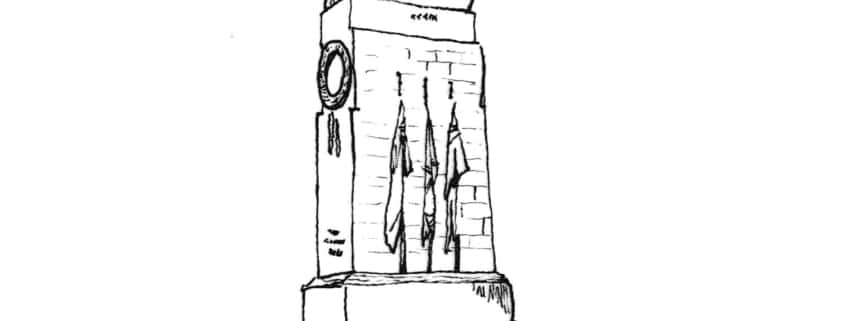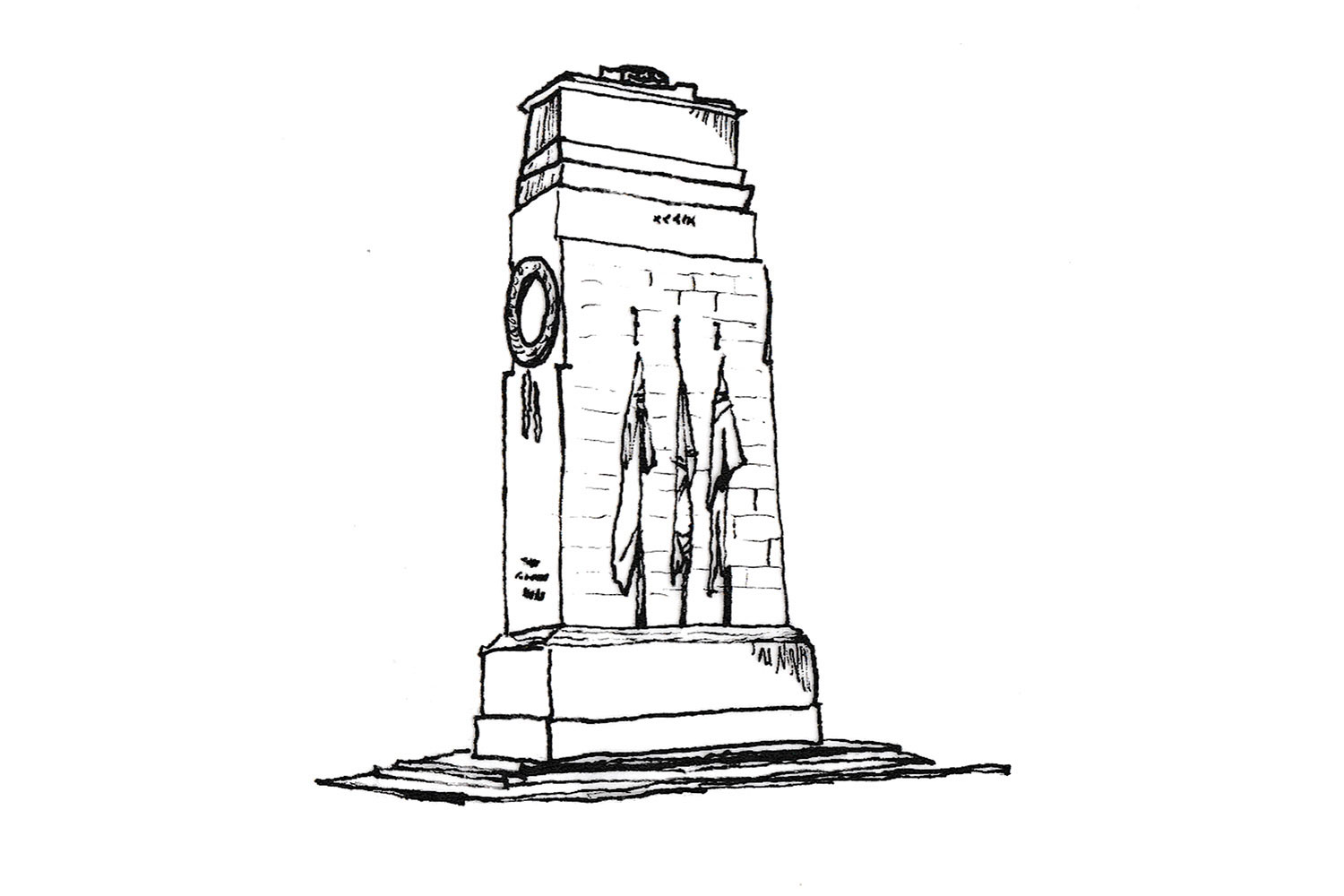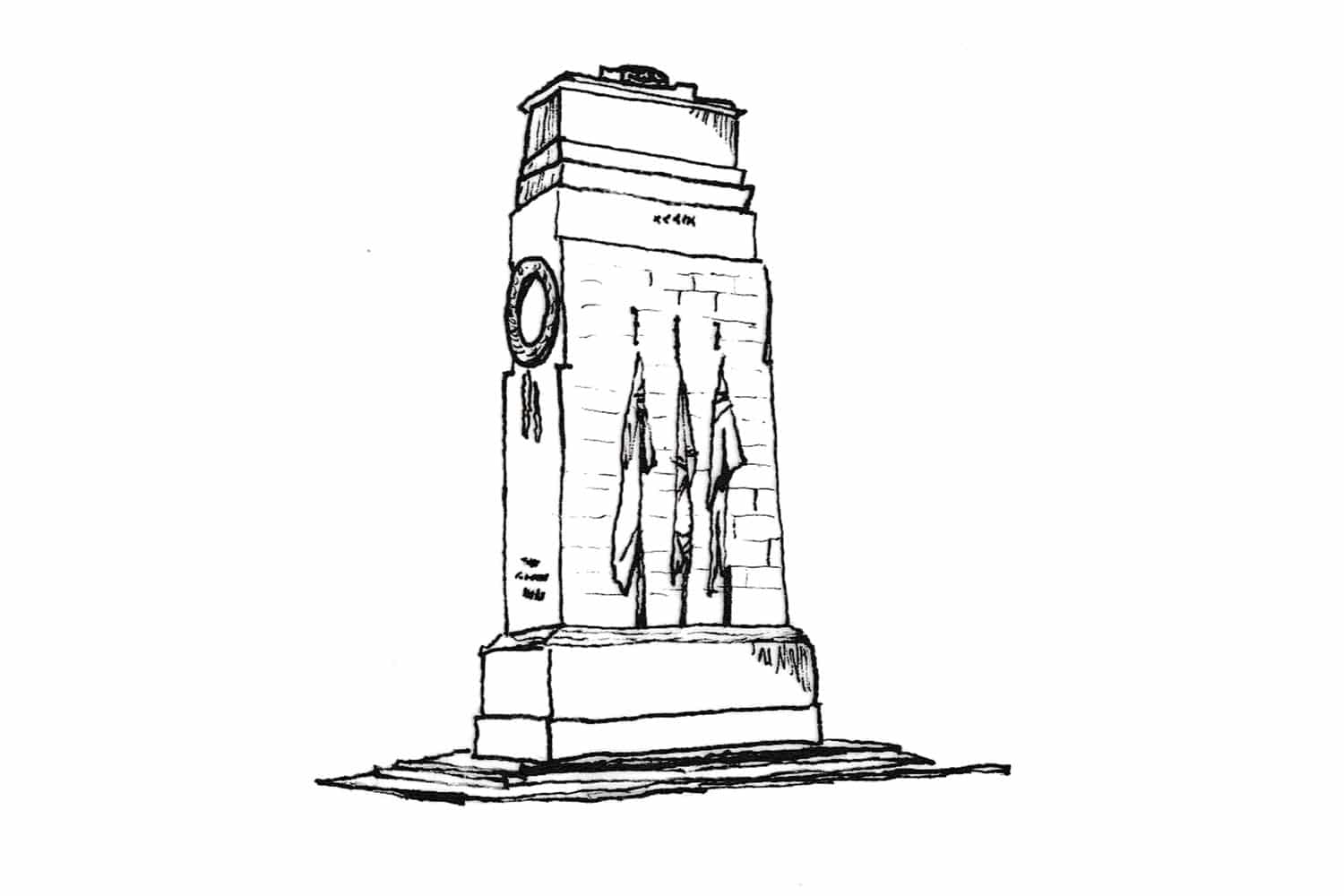
Description
The Voormezeele Enclosures, of which there were originally four, were cemeteries of regiments that continued to add graves until Voormezele was taken by the Germans in April 1918. Of these four, numbers 1 and 2 are now in use as one joint cemetery. Enclosure No. 1 is now plot i and Enclosure No. 2 is plot ii. Graves from Enclosure No. 4 have been accommodated in rows b, c and d of the latter plot. The cemetery is situated on the main road in the centre of Voormezele village and is bordered by gardens, sheds and a large industrial hall.The cemetery has an irregular layout and consists of two parts that lie in a staggered position in relation to each other. This form was created by joining two smaller cemeteries. By positioning the War Stone and the Cross of Sacrifice strategically, the architects have managed to effect unity. A remarkable aspect is the path of stone – instead of grass – that leads from the entrance to the first shelter. At the time it proved impossible to use the shelters as entrance buildings. However, the path manages to effect a connection between these buildings and the entrance.
The two unusual shelters are made entirely of white stone. The slightly arched shape of the roof and its end are not characteristic of Lutyens’ designs for the IWGC and are an addition by his assistant Von Berg. The ball on top is also found at Post Office Rifles Cemetery by Von Berg. The fine ceiling is convex and has been realized in sections of stone. The cemetery lies two steps higher than the road and is virtually level. It is bordered by a low brick wall with covering slabs of stone. The entrance consists of a plain opening in the wall with two poles in between and a small plateau with two steps. The bronze chain between the posts has tapering links.
The War Stone has been positioned as far eastward as possible, whereas the headstones are oriented toward the west, away from the road. In spite of the irregular layout, an axis of symmetry has been introduced by the position of the War Stone, the Cross of Sacrifice and the two shelters. The way the path leads from the right-hand shelter to the road, ending in a seat, is somewhat unexpected. By positioning the entrance on one side, an attractive diagonal visibility line is created from that building over the cemetery. Three Japanese cherries have recently been planted to form a square with the Cross of Sacrifice. (Geurst, 2010, p.430)
Bibliography
Geurst, J. (2010) Cemeteries of the Great War by Sir Edwin Lutyens. Rotterdam: 010 Publishers.Also Cited In
Listing Grade
Coming soonListing Reference
Client
Imperial War Graves Commission

